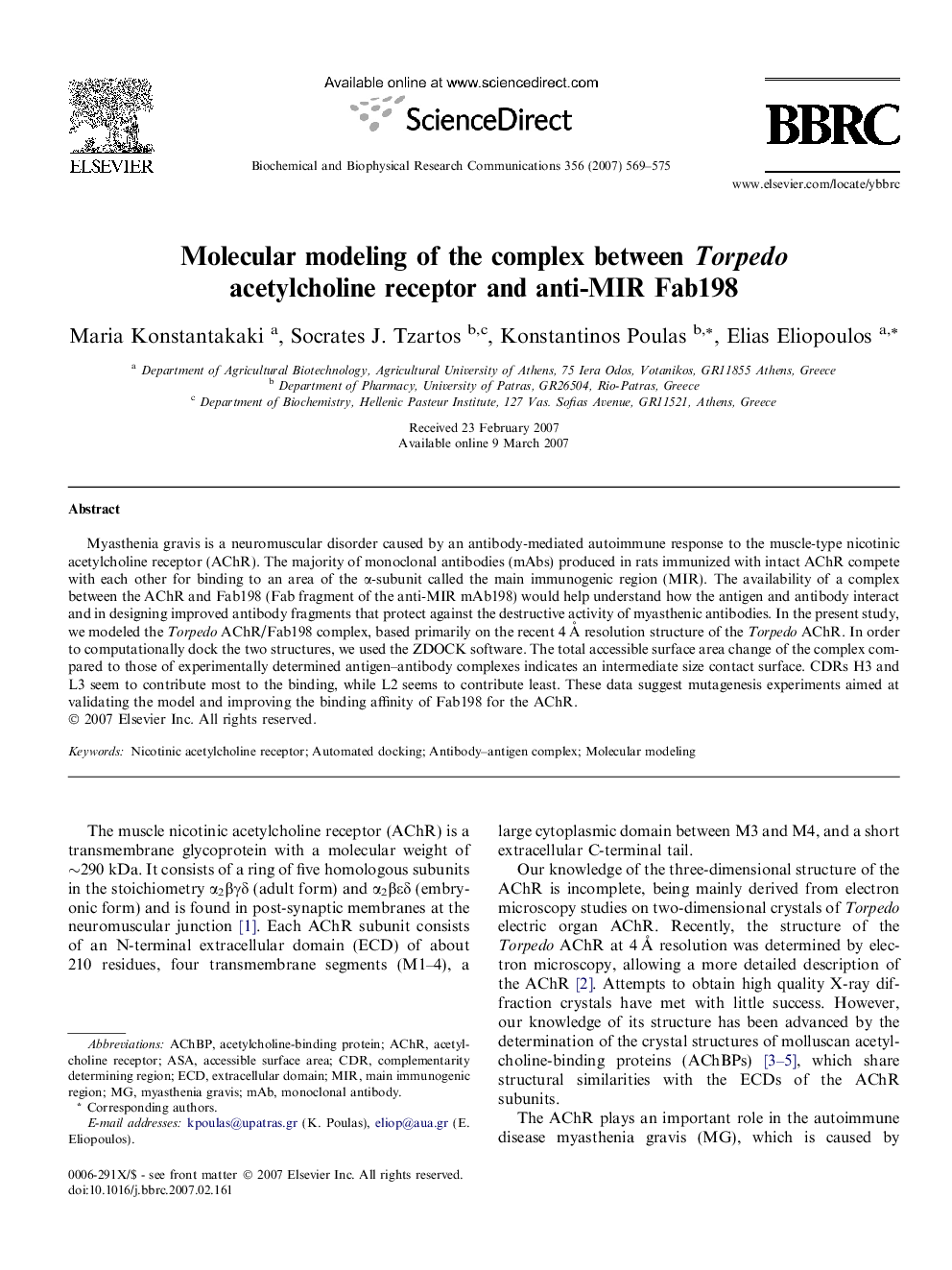| Article ID | Journal | Published Year | Pages | File Type |
|---|---|---|---|---|
| 1937846 | Biochemical and Biophysical Research Communications | 2007 | 7 Pages |
Myasthenia gravis is a neuromuscular disorder caused by an antibody-mediated autoimmune response to the muscle-type nicotinic acetylcholine receptor (AChR). The majority of monoclonal antibodies (mAbs) produced in rats immunized with intact AChR compete with each other for binding to an area of the α-subunit called the main immunogenic region (MIR). The availability of a complex between the AChR and Fab198 (Fab fragment of the anti-MIR mAb198) would help understand how the antigen and antibody interact and in designing improved antibody fragments that protect against the destructive activity of myasthenic antibodies. In the present study, we modeled the Torpedo AChR/Fab198 complex, based primarily on the recent 4 Å resolution structure of the Torpedo AChR. In order to computationally dock the two structures, we used the ZDOCK software. The total accessible surface area change of the complex compared to those of experimentally determined antigen–antibody complexes indicates an intermediate size contact surface. CDRs H3 and L3 seem to contribute most to the binding, while L2 seems to contribute least. These data suggest mutagenesis experiments aimed at validating the model and improving the binding affinity of Fab198 for the AChR.
